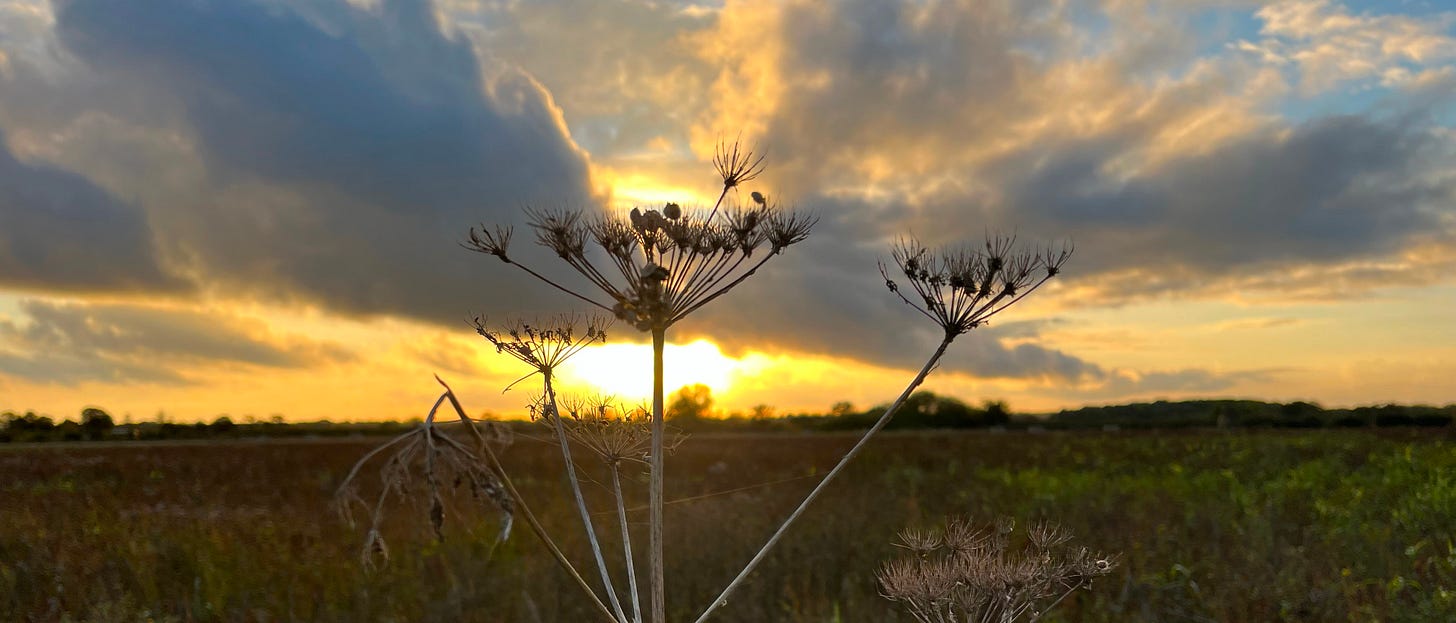Another Country Diary #5 —With aurora and other omens.
I started this country diary as an experiment, a way of keeping up my daily writing and turning it into something which might, over time, acquire a depth and weight to it. Here’s the fifth instalment.
9/10
As the academic term intensifies, and the days darken at either end, there is less time to be in nature, or even for small observations through the window. The day is a jumble of teaching, meetings, and emails. By the time I leave the office it is almost six and the sky is a smudge of peach and soot-coloured clouds. Jackdaws chatter above the car park.
It is fully dark by the time I’ve picked up my daughter from the city. We have to turn back from our usual B-Road route home because of an accident (we suppose) out of sight behind a queue of vehicles lighting the hedges amber with the blinking of their emergency lights. We route instead through a neighbouring village where a barn owl rises, wraith-like, on the periphery of the pooled light of my main beams. Just beyond the village there is a line of bright floodlights marking the route of one of the high voltage underground cables. The moon looks muddy behind broken cloud.
On the evening news I watch the pr…




